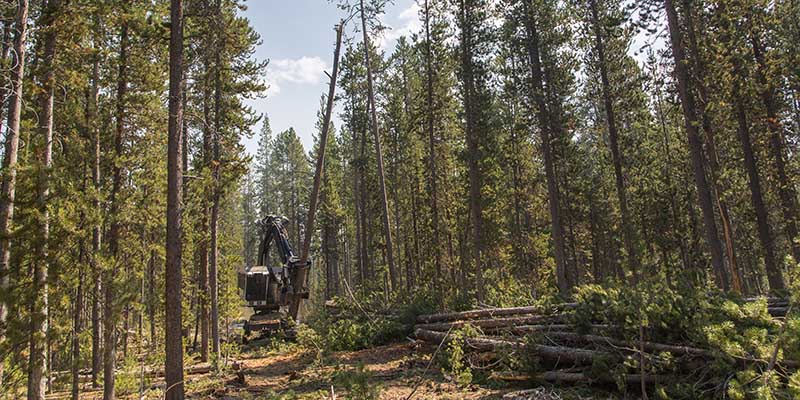
(Photo: NPS/Neal Herbert)
California experienced a record-breaking wildfire season last year, making it more critical than ever that the state shift its focus from being reactive to proactively reducing risks and restoring the state’s forests, watersheds, working landscapes and ecosystems.
“California cannot sustain the level of destruction experienced in the past several years,” said CA FWD CEO Micah Weinberg. “Wildfires are destroying lives, property, ecosystems and economies, and are threatening environmental resources that serve all Californians, including our water supply, clean air, wildlife habitat, and recreational and cultural assets.”
Governor Gavin Newsom’s proposed 2021-22 state budget would provide $1 billion to increase the pace and scale of fire prevention and forest resiliency work in California. The proposed investments support California’s new Wildfire and Forest Resilience Action Plan, which calls for bolder action to address the drivers of catastrophic fires and increase the pace and scale of forest management. The proposed budget includes $323 million in “early actions” during the current budget year to jumpstart fire prevention projects and economic recovery in the forest sector.
“Investments in forest management can reduce risk from fire, negative air quality impacts and greenhouse gas emissions while protecting water quality and supply, but can employ thousands of workers in communities where unemployment and low incomes are rife,” said Glenda Humiston, vice president of UC Agriculture and Natural Resources and co-lead of the California Economic Summit’s Empowering Resilient and Productive Landscapes Work Group.
Large investments like these are critical to addressing the growing threat of wildfires and are a key priority in CA FWD’s “California’s Wildfire Crises: A Call to Action” issued in 2019. The report highlighted the costs of fighting wildfires, as well as the extensive harms to the environment and to rural and urban communities throughout the state.
The report identified the following principles to guide action:
- California needs to rapidly ramp up efforts to protect our landscapes and rural communities.
- Ecological and economic solutions must match, in size and scale, the landscapes and watersheds in peril, including millions of acres of forests and wildlands requiring attention.
- Forest-based economic activities that strengthen and sustain the environment and rural regions will be critical. The state must build the infrastructure, markets and skilled workforce necessary for forest-based industries that can contribute to resilient ecosystems and healthy communities.
- Private capital and enterprise are essential to the solution, as is state leadership and partnerships across local, state and federal government.
The State budget proposal is aligned with CA FWD’s 2021 Roadmap to Prosperity, which supports immediate scaling of state investments over the next two years in wildfire reduction and forest restoration.
“We are encouraged to see the state investing in resilient forests and communities, and we are committed to continue working with our many partners to move forward solutions that will make a real impact,” Weinberg said.
On-the-ground efforts to make our forests more resilient will be the focus of two upcoming CA FWD webinars on March 4 and March 11 at 11 a.m. As part of the Building Equitable Economies weekly series, the webinars will feature leaders in forest management and rural economies and will include time for questions from attendees. Learn more and register here:
On-the-Ground Forest Resiliency Projects I (March 4)
On-the-Ground Forest Resiliency Projects II (March 11)

